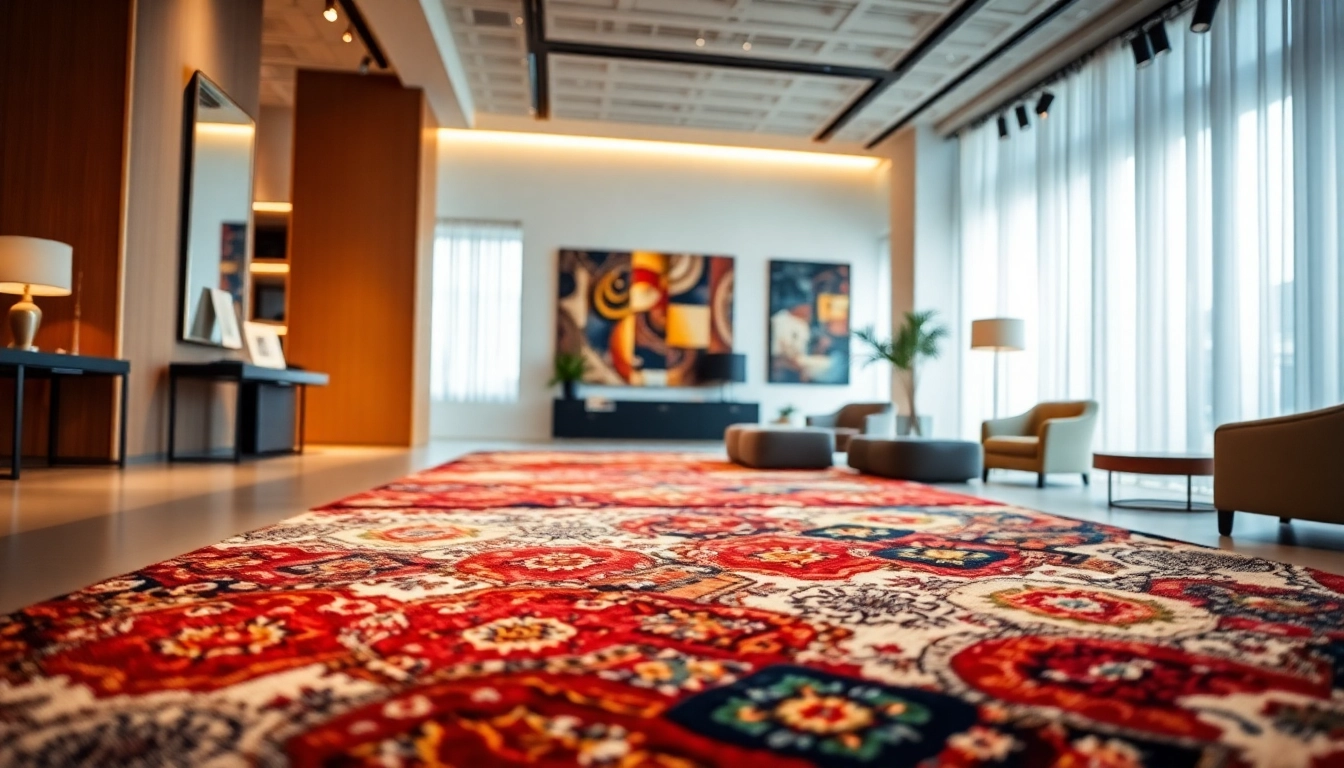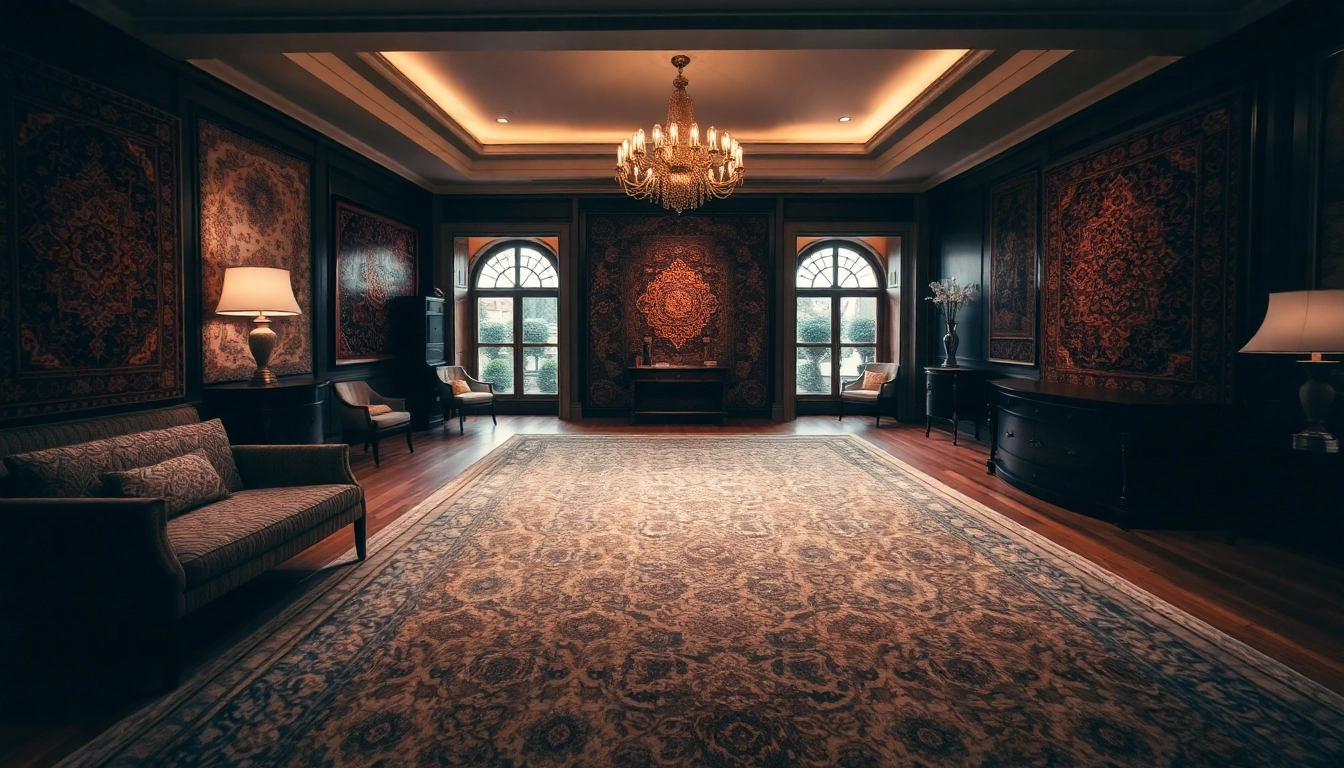Understanding the Different Types of Tappeti a Milano
Modern vs Traditional Rugs in Milan
Milano’s interior design scene is renowned for its sophistication, embracing a diverse range of rug styles that reflect both contemporary minimalism and timeless tradition. When exploring Tappeti a Milano, one encounters an impressive spectrum: modern rugs characterized by abstract designs, bold colors, and innovative materials alongside traditional hand-knotted Persian, Turkish, or Oriental pieces. Modern rugs often feature geometric patterns and monochrome palettes, making them ideal for urban, contemporary interiors seeking a sleek aesthetic. Conversely, traditional rugs bring a sense of warmth and heritage, with intricate motifs, rich textures, and classic color schemes that evoke a sense of history and craftsmanship. Choosing between these styles depends on the desired ambiance, functional needs, and overarching interior themes, but both can be seamlessly integrated into Milanese homes with the right approach.
Understanding the distinctions between these types enables homeowners and designers to make informed decisions, ensuring their rug choice enhances their spaces rather than competes with other design elements. Milan’s diverse selection of rug shops and artisans offers a rich environment to explore these contrasts firsthand, from sleek modern outlets like Artorient to traditional boutiques specializing in handcrafted Persian and Caucasian pieces.
Materials and Craftsmanship of Milanese Tappeti
One of the defining features of Tappeti a Milano is the exceptional quality of materials and craftsmanship. Milanese rug artisans and select importers prioritize high-grade natural fibers such as wool, silk, cotton, and jute. For example, wool remains a popular choice for its durability and softness, often sourced from New Zealand or Tibetan herds, ensuring a luxurious feel and long-lasting wear. Silk rugs, typically handwoven in Iran or India, stand out for their luster and fine detail, often reserved for accent pieces or luxurious applications.
The craftsmanship behind these rugs involves complex, labor-intensive techniques such as hand-knotting, weaving, and pile cutting. Renowned artisans often take months, even years, to produce a single piece, especially for traditional Persian or Caucasian designs. The knot density, measured in knots per square inch, is a crucial indicator of quality—higher knot densities equate to finer details and greater durability.
Many Milanese rug retailers, including those highlighted in local showrooms, collaborate with skilled artisans from Iran, Turkey, and Central Asia to ensure authenticity and craftsmanship. Understanding these materials and techniques allows buyers to select rugs that not only fit their aesthetic but also serve as investments due to their durability and cultural value.
Latest Trends in Tappeti a Milano Design
Design trends in Milan are continuously evolving, blending traditional craftsmanship with contemporary innovation. Currently, a significant trend is the fusion of minimalist aesthetics with textured, patterned rugs that serve as statement pieces. Geometric motifs with metallic threads or bold, abstract patterns made from eco-friendly materials are increasingly popular among Milan’s modern interiors.
Another notable trend is the resurgence of vintage and kilim rugs, which add a bohemian or eclectic touch when styled correctly. These pieces bring warmth and history into modern spaces, creating a layered, curated look. Additionally, sustainable and handmade rugs are gaining traction, aligning with Milan’s eco-conscious movement. Many brands now emphasize ethical sourcing and environmentally friendly dyes, appealing to the city’s design aficionados who value authenticity and sustainability.
For homeowners interested in keeping up with these trends, exploring showrooms like Artorient or browsing online platforms enables access to the latest designs, including limited editions and custom-made options tailored to individual tastes.
Where to Find Quality Tappeti a Milano
Top Showrooms and Specialty Shops in Milan
Milan is home to several prestigious showrooms offering a curated selection of high-quality tappeti. Artorient Milano, located conveniently in the city, boasts a vast collection of modern, geometric, floral, Persian, and Chinese rugs, making it a go-to destination for both casual buyers and interior designers. Similarly, Cohen Tappeti has been serving Milan for over 60 years, specializing in handcrafted Iranian and Caucasian pieces, often discounted up to 70%, reflecting their commitment to quality and affordability.
Other notable shops include Zal Tappeti Milano, which provides a broad range of Persian, vintage, and modern rugs, and Azerbaijan Tappeti, with physical stores in Sempione and Solari neighborhoods, offering custom options, restoration, and expert advice. Visiting these showrooms offers the benefit of personalized assistance, tactile experience, and expert insights to ensure an informed purchase.
Online Platforms and E-commerce Options
For those who prefer shopping from the comfort of their home, Milan’s vibrant online market presents numerous platforms specializing in authentic, handcrafted tappeti. Websites like Tappeti.it and Artorient’s online catalog provide extensive selections, from vintage Kilims to contemporary abstract designs, with detailed images, descriptions, and filtering options to match specific styles and budgets.
Online shopping also allows for easy comparison, access to international collections, and reviews from other buyers, enhancing purchase confidence. However, it’s crucial to verify the authenticity, provenance, and return policies before purchasing. Many reputable sites include detailed guides on measuring, care, and troubleshooting to help buyers make confident, satisfying decisions.
Guidelines for Buying Authentic and Handcrafted Rugs
Ensuring the authenticity of a Tappeti a Milano involves a few critical steps. First, always seek certified artisans or reputable dealers known for transparency regarding sourcing and craftsmanship. Look for detailed descriptions about the knot count, origin, and materials used.
Secondly, request high-quality photographs from multiple angles—pay attention to the back of the rug, which should reveal neat, uniform knots if truly handcrafted. Third, inquire about the dyes used; natural dyes should have subtle variations, unlike synthetic colors that appear flat and uniform.
Finally, whenever possible, inspect the rug in person or order from platforms that offer return policies. Certified showrooms and online sellers like those mentioned above often provide certificates of authenticity and care instructions, which are essential for preserving your investment.
How to Care for Tappeti a Milano to Ensure Longevity
Proper Cleaning and Maintenance Tips
To preserve the beauty and value of your Tappeti a Milano, regular maintenance and proper cleaning are essential. Vacuuming gently at least once a week removes surface dirt and dust, preventing fibers from weakening. Avoid using rotating brush attachments, which can damage delicate knots, especially in antique or hand-knotted rugs.
For spot stains, blot the area immediately with a clean, damp cloth; avoid harsh chemicals or scrubbing. For deep cleaning, professional rug washing services specializing in natural fiber treatments are recommended. Many Milano-based establishments, like Art Tappeti, offer expert cleaning using eco-friendly, water-based methods that lift dirt while preserving dyes and fibers.
Restoration and Repair Services Available in Milan
Over time, even the finest rugs may require repairs or restoration due to wear, moth damage, or fading. Milan boasts skilled artisans and specialized workshops capable of repairing tears, reweaving frayed edges, and restoring colors through dyeing techniques. Restoring a vintage or antique rug not only extends its lifespan but also enhances its aesthetic appeal and market value.
When choosing restoration services, ensure they have experience with authentic handcrafted rugs and use traditional methods to maintain integrity. Always request a detailed quote and turnaround time before proceeding.
Cost & Investment: Pricing of Tappeti a Milano
Factors Influencing Price and Value
The price of a Tappeti a Milano varies significantly based on several factors: material quality (e.g., silk vs wool), craftsmanship (hand-knotted vs machine-made), age (antique vs new), provenance, design complexity, and size. Handcrafted Persian or Caucasian antique rugs can command prices from thousands to tens of thousands of euros, reflecting their artistry and rarity.
In contrast, modern machine-made rugs or less intricate pieces are more accessible, often starting from a few hundred euros. Investing in authentic, high-quality rugs ensures durability and can appreciate over time, especially with vintage and antique pieces gaining recognition among collectors and interior enthusiasts.
Budgeting for High-Quality Rugs
Setting a realistic budget begins with identifying your priority: aesthetic impact, longevity, or investment potential. For most homeowners in Milan, allocating a budget of €1,000 to €5,000 can secure a beautiful, durable handcrafted rug suitable for living spaces. Larger or more intricate antique pieces naturally require higher investments.
It’s advisable to view your purchase as a long-term investment. Timeless designs and superior craftsmanship often retain or increase their value, making them a prudent financial decision alongside their decorative appeal.
Enhancing Your Milan Home with the Perfect Tappeti
Design Tips for Combining Rugs with Interior Styles
Integrating a Tappeti a Milano into your interior design involves understanding the stylistic harmony between rug and room. For minimalist or contemporary spaces, opt for geometric, monochrome, or low-pile rugs that serve as subtle accents. Textured or patterned modern rugs can add visual interest without overwhelming the space.
In traditional or eclectic interiors, richly patterned Persian or Kilim rugs act as focal points, anchoring the room and complementing vintage furniture or ornate details. Layering rugs, such as placing a smaller, patterned rug over a larger neutral one, can create depth and personality.
Lighting and furniture placement are also critical. Position your rug to frame key pieces like a sofa or bed, ensuring it complements curtains, wall art, and other textiles for a cohesive look.
Personalized Rug Selection for Unique Spaces
For truly distinctive interiors, consider customizing a rug—either through bespoke weaving or selecting one with specific motifs, colors, or sizes. Many Milanese artisans and retailers offer tailored services, ensuring your rug reflects your personality and matches your space perfectly. This approach is especially popular for creating signature elements that enhance an exclusive or luxury environment.
When opting for customization, collaborate closely with designers and craftsmen to select authentic materials, intricate designs, and appropriate sizing, resulting in a piece that becomes a centerpiece and a reflection of your style.
Case Studies of Stylish Milanese Interior Designs
Several Milanese residences exemplify how the right rug elevates a home. For instance, a modern apartment in Brera beautifully combines a sleek, neutral palette with a large, vintage Persian rug, creating a balanced blend of old and new. The rich patterns and colors of the Persian rug serve as a visual anchor, adding depth and cultural richness to the space.
Another example is a traditional Villa in the suburbs where Kilims and Caucasian rugs are layered over antique wooden flooring, complementing the classical architecture and ornate furniture. These case studies highlight that selecting the right Tappeti a Milano can transform ordinary spaces into extraordinary environments.



